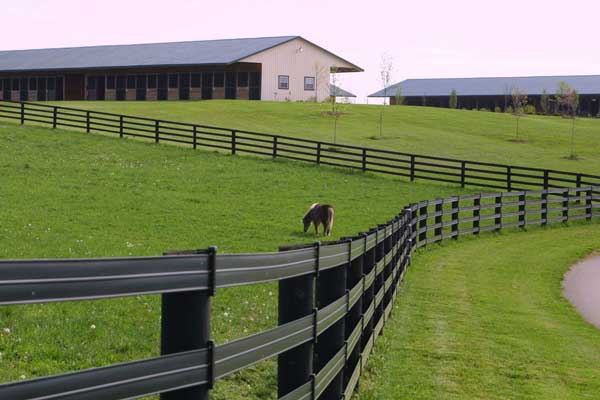Horse Fencing 101: Choosing the Right Fence
As you all know, the Mr. and I left our cozy suburban lifestyle behind when the chance to own our very own farmhouse became a viable choice for us.
Now then, first things first… we have acres of rolling pasture surrounding our home but only semi cross-fenced sections with barbed wire and wobbly splintered posts. Yeah, …not going to work for my horses.
So… while I could spend the day complaining about the serious hazards of barbed wire fencing and animals, let’s just leave it at I do not like it and do not permit it to be -anywhere- on my property…at all. That being said, it was time to look over our options and devise a plan. Generally speaking you need a minimum of 1 acre per horse if you keep them in a pasture setting, in an ideal world you would have at least 2 acres per horse.
Fun fact: One horse will eat approximately 100lbs of forage per day.
Onto the fun part, we have four horses at present but as I also supplement their diet with hay and grain, in addition to pasture grazing, for the time being we’ve elected to fence off 4 acres total. In a few years when we’ve had a chance to put away some funds towards expanding the pasture, I would like to fence the 4 acres alongside the current pasture to allow for rotating them seasonally to give our grass a break.
When it comes to fencing you will find pros and cons with each different type.
The Primary 4:
- Wood
- Vinyl
- Wire
- Electric Tape/Wire
The Brief Rundown…
Wood is both sturdy and attractive to look at but unfriendly towards your pocket book. It also requires the most upkeep and is the most labor-intensive to install. Vinyl will give you that picture perfect look all year round with minimum upkeep but is easily broken by excessive strain especially if you have large fence leaners like our boys! Wire is practical on cost, installation, and upkeep but be forewarned, if fencing in horses I would steer VERY VERY clear of this pitfall. The cost in potential, and I really mean eventual, vet bills will quickly exceed the initial savings on materials. Electric tape along smooth wire is a less invasive version of your barbed wire fence but still comes with a variety of potential dangers. It is also easier on the pocket book but there is that age old saying, ‘You get what you paid for.’
Our needs were very clear. I needed strength and durability, something that would last me at least 10-15 years ideally, that was also horse friendly, NON-wire, budget friendly (if possible!), and as we live in the south, something that could withstand constant temperature fluctuations and endless humidity. …oh yeah, and every pest known to mankind. That to…
My research led me to CenFlex 5″, a Centaur Fencing product. CenFlex 5″ is comprised of 3 steel cables all coated in polymer and then suspended evenly within a polymer-coated sheath to give the appearance of a wood panel. The difference? Equal strength to wood fencing, if not better, and then there is its flexibility, as well as wood/rot/mildew/mold/weather resistant. You never need to paint/stain it, horses will not chew it, and pests won’t bother it! And yes, it actually gets better… it is lightweight and only requires tightening on corner posts once a year. Top that with a 30 year limited lifetime warranty and we were sold.

All of my fears of a slat breaking and impaling a horse, splinters breaking off, wire tangling about a leg, horses beginning to crib and/or chew my fence, pests destroying the integrity of a plank, constantly repairing or replacing damaged planks…gone, poof! Just like that.
Now remember I did mention, you get what you paid for. I would place CenFlex beneath wood fencing on cost but only just and I will admit… it is quite a deal more upfront than wire, electric, or vinyl options. After weighing our options, we decided the additional up front cost greatly outweighed the long-term investment of repairs and routine maintenance to a wood fence.
Update: After patiently waiting, our CenFlex arrived today. We won’t talk about the fact my post holes aren’t all dug yet or the fact the treated posts we chose for our fence haven’t been shipped from the lumber yard. For now…I’m just going to revel in the excitement that the fence materials themselves are here.



